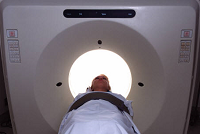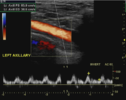Medicare’s required changeover to ICD-10 diagnosis coding has shed more light than usual on a topic that requires constant diligence by radiology practices. Regardless of the payer being billed, good procedure coding and diagnosis coding are a must – and the source material for that coding is the documentation found in the radiologist’s report of the imaging examination.
Documentation Diligence is the Key to Radiology Practice Reimbursement on November 5, 2015
Categories: radiology reimbursement, radiology documentation, breast imaging, CT imaging, 3D reconstruction, ultrasound, tomosynthesis, DBT
How to Document Abdominal Ultrasounds Properly In Order to Maximize Radiology Practice Reimbursement on October 13, 2015
As with any medical procedure, the performance of abdominal ultrasound examinations is defined by specific practice parameters. Likewise, the documentation of those exams must also comply with certain criteria in order for the practice to realize full reimbursement for them. The accepted guideline1 for the performance of abdominal or retroperitoneal ultrasound exams indicates, “Depending on clinical indications, an examination may include the entirety of the abdomen and/or retroperitoneum, a single organ, or several organs.” Similarly, the documentation must contain an exact description of the procedure for proper billing.
Categories: radiology reimbursement, radiology documentation, ultrasound
Preparing Your Radiology Practice for the ICD-10 Transition - Documentation for Neoplasms on October 8, 2015
Healthcare Administrative Partners continues our efforts to help radiology practices make a successful transition to ICD-10 with this article, the third in our series focusing on how radiologists can fine-tune their documentation to assure the best coding and uninterrupted reimbursement. Our previous articles covered Documentation for Pain and Documentation for Fractures and our blog contains additional information to help radiology practices prepare for this major change.
Categories: radiology reimbursement, radiology documentation, icd-10
Preparing Your Radiology Practice for the ICD-10 Transition - Documentation for Fractures on September 14, 2015
This is the second in our series of articles designed to assist radiologists with the transition to ICD-10-CM, which will be used in place of ICD-9-CM for reporting diagnoses to Medicare beginning on October 1, 2015. Our goal is to help you fine-tune your documentation to assure the best coding and uninterrupted reimbursement under ICD-10. Our first article covered Documentation for Pain and we also previously posted other information to help radiology practices prepare for this major change. A large number of diagnostic imaging exams deal with the assessment of fractures and the documentation of these exams will require some pieces of information that were not always included in radiology reporting until now.
Categories: radiology reimbursement, radiology documentation, icd-10
Preparing Your Radiology Practice for the ICD-10 Transition - How to Document Pain on August 27, 2015
By this time, most people working in healthcare are already aware of the deadline to begin using ICD-10-CM in place of ICD-9-CM for reporting diagnoses to Medicare on October 1, 2015. Healthcare Administrative Partners has previously posted information to help radiology practices prepare, and this new series of articles is designed to help radiologists fine-tune their documentation to assure the best coding and uninterrupted reimbursement under ICD-10. One of the major areas of concern for radiologists is in the description of pain for proper diagnosis coding. A survey of historical coding by radiology practices showed that 17 of the 100 most commonly used ICD-9 diagnoses were related to pain.
Categories: radiology reimbursement, radiology documentation, icd-10
Medicare Changes Position on IDTF Services for PQRS Participation on June 23, 2015
Participation in Medicare’s PQRS program is important to radiologists in order for them to maintain full reimbursement under the Medicare fee schedule, and to perhaps earn a higher level of payment in future years. Radiologists providing services in Independent Diagnostic Testing Facilities (IDTFs) will not be able to participate in PQRS, according to a ruling described in the June 16, 2015 issue of the RBMA Washington Insider. This most recent guideline issued by the Centers for Medicare and Medicaid Services (CMS) clarifies past guidance by stating, “After further review, CMS is announcing that EPs [eligible professionals] who provide services under an IDTF or an independent lab (IL) (and on behalf of services provided by that IDTF or IL) are not able to participate in PQRS. Therefore EPs who provide services [billed] under an IDTF or IL will not receive the 2015-2018 PQRS payment adjustments for services associated with the IDTF or IL”. This reverses CMS guidance issued as recently as March, 2015.
Categories: radiology reimbursement, medicare reimbursement, cms, PQRS
Conduct a Gap Analysis to Get Your Radiology Practice ICD-10 Ready on March 25, 2015
Will you have to be ready to use ICD-10 coding by October 1, 2015? The answer is: "perhaps". Current law says that this will be the earliest date for its implementation. CMS, the Centers for Medicare and Medicaid Services, has stated that there will be no further extensions. And, at the time of this writing, there is no indication that an ICD-10 extension will be included as part of legislation that would also extend the current Medicare fee schedule beyond its planned March 31st expiration, but this could change as negotiations continue in Washington this week.
As we have reported in a previous article, there are many good reasons to prepare for ICD-10 even if the Medicare program never requires it to be used! The key to readiness is to improve clinical documentation so that the coding and billing team can do the best job possible to maximize your practice reimbursement, and this approach will also help improve your billing immediately.
Categories: radiology reimbursement, radiology documentation, icd-10
Assessing the Future Impact of Medicare Regulations on Radiology and Radiation Oncology on March 6, 2015
The landscape of Medicare payment policy will be changing over the coming years as a result of actions taken in 2014 through the Medicare Physician Fee Schedule (MPFS) and the Protecting Access to Medicare Act (PAMA). The MPFS for 2015 contained fewer changes to current payment policy than it did proposals deferred for future consideration. The Protecting Access to Medicare Act of 2014 (PAMA) was initiated to avoid the significant Medicare payment reduction imposed by the Sustainable Growth Rate (SGR) provision in the Medicare law, but it also contained other provisions affecting payment under the Medicare program.
Categories: radiology reimbursement, radiation oncology reimbursement, MPFS, PAMA
What Radiologists Need to Know Before Billing for Lung Cancer Screening Using Low-Dose CT on March 4, 2015
The Centers for Medicare and Medicaid Services (CMS) announced that Medicare coverage for lung cancer screening using low-dose CT (LDCT) scans would become effective as of February 5, 2015. However, according to the American College of Radiology (ACR), we are likely a few months away from publication of the details needed before radiology practices can begin submitting claims to Medicare for these scans. They recommend that “physicians meeting the coverage criteria should hold all claims for low-dose CT lung cancer screening until further reimbursement instructions are released by CMS.” The article “College Addresses Lung Cancer Screening Questions” appeared in the February 13th edition of the ACR’s Advocacy in Action eNews.
Categories: radiology reimbursement, medicare reimbursement, low dose CT
Duplex Doppler Ultrasound Tips to Help Maximize Radiology Reimbursements on February 26, 2015
Good documentation is the key to optimal coding and reimbursement for radiology procedures. By including all of the essential elements in the radiology report, physicians give their coders all of the information they need to get the billing done most efficiently. But when the report lacks some required piece of data, the coders must contact the radiologist for clarification. At best, this slows down the billing process but, at worst, it leads to under-coding and therefore lower payment than is possible for the procedure.
Categories: radiology reimbursement, radiology documentation













